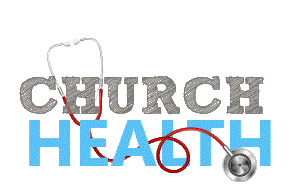Church Health Analysis
 How healthy is your church? Do you know? What would you look at to determine church health? Well let me tell you. It is like going to your local GP. Let's say that you want to know about your own physical health. You see your doctor who most likely will do a battery of tests. She checks your blood pressure. Puts a stethoscope to your chest and listens to your heart. To your back and listens to your lungs. Your ears and eyes will be carefully inspected. She will ask you a number of questions. She might even ask you to go to the nearest pathology clinic to have some blood work done. All this analysis will help determine your overall health. Perhaps your GP will ask you to come in for a return visit so that she can go over the results and provide some advice to increase your health into the future.
How healthy is your church? Do you know? What would you look at to determine church health? Well let me tell you. It is like going to your local GP. Let's say that you want to know about your own physical health. You see your doctor who most likely will do a battery of tests. She checks your blood pressure. Puts a stethoscope to your chest and listens to your heart. To your back and listens to your lungs. Your ears and eyes will be carefully inspected. She will ask you a number of questions. She might even ask you to go to the nearest pathology clinic to have some blood work done. All this analysis will help determine your overall health. Perhaps your GP will ask you to come in for a return visit so that she can go over the results and provide some advice to increase your health into the future.
Well it is not that different when it comes to church health. As churches in the CRCA we are big on church health. Our GROW strategy is all about growing "healthy churches which nurture and equip their members and, by God’s grace, expand numerically...." But in order for churches to grow healthy, it is important that churches undergo church health analysis. As part of our overall missional strategy to reach the lost for Christ and multiply our churches we are committed to "utilise diagnostic tools to provide church health analysis and encourage planning."
We have been looking at the various strategies we have in place for coaching, training for evangelism, disciple-making, leadership development, as well as the development of multiple pathways to grow gospel workers and leaders. We now turn to the strategy of church health analysis.
When it comes to church health analysis we utilise a number of tools to provide church health analysis and encourage planning. The primary tools are the diagnostic church health surveys produced by NCD (Natural Church Development) and NCLS (National Church Life Survey). Through extensive global research NCD has discovered that growing and declining churches differ in eight (8) areas: empowering leadership, passionate spirituality, gift-based ministry, loving relationships, inspiring worship, need-orientated evangelism, holistic small groups, and effective structures. By doing an NCD survey in your church you will have an accurate diagnosis of how you are tracking in each of these 8 areas. In addition, through this survey, NCD will also give you the back story behind your survey results. NCLS, albeit quite similar to the NCD survey, it also focuses on 'Inclusion', which is about the successful integration of people into church life. About half of CRCA churches have at one time or another done an NCD survey. All CRCA churches are being encouraged to participate in the upcoming 2021 National Church Life Survey which will take place in the last quarter of 2021 and alongside the national Census in Australia.
NCD and NCLS are not the only tools a church can use to analyze church health. Throughout the history of Reformed churches we have considered the marks of the true church outlined in the Belgic Confession Art. 29 as benchmarks churches ought to strive for. These marks are "the pure preaching of the gospel; ... the pure administration of the sacraments as Christ instituted them; ... the practice of church discipline for correcting faults." If you were to assess your church using these benchmarks, you might discover areas that require attention to improve overall church health. In my work with churches I also use two other tools to help them analyze church health: (1) The A.P.A. Analysis Tool. A.P.A. or (Achieve; Preserve; Avoid) Analysis Tool, is used to brainstorm ideas, uncover key church initiatives; identify core values, and set future directions. (2) The S.W.O.B. Analysis Tool. The S.W.O.B. or (Strengths, Weaknesses, Opportunities, Barriers) Analysis Tool is used to help a church understand where it is now, see and celebrate what God is doing, and to assess on-going ministry opportunities and resources the church can take advantage of.
But analysis is not enough. When you go to your GP, you don't just want to have a diagnosis; you want to know what you can do to improve your health. For this reason the CRCA is committed to come alongside churches to help them with planning and setting initiatives in place for improved church health. Both NCD and NCLS provide additional materials that will guide churches in developing a plan. Ministry Formation is available to assist churches in understanding their survey results and to develop a strategic plan to grow a healthy and multiplying church. No matter what tool you might use to analyze your church health, the key is implementing a planning process to put into motion the initiatives that will lead to increased health. If you like to know more what this planning process would look like, check out the online resources available here.
The bottom line: if you want to increase your church's health, it all begins with doing a church health analysis.





 Jack De Vries was hired on by the Christian Reformed Churches of Australia and began his work as Ministry Training Coordinator in January 2008. In 2012 this role shifted to that of Ministry Development Coach.
Jack De Vries was hired on by the Christian Reformed Churches of Australia and began his work as Ministry Training Coordinator in January 2008. In 2012 this role shifted to that of Ministry Development Coach.
